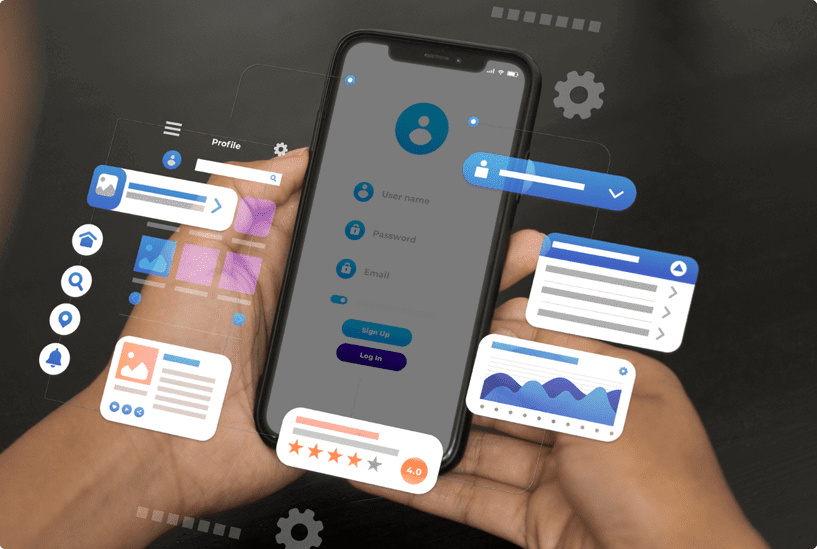The Benefits of Native App Development for Performance-Intensive Applications

In the dynamic world of mobile and web development, one of the most critical decisions developers face is whether to create native applications or opt for alternatives such as cross-platform or web-based solutions. While cross-platform development has gained traction for its ability to deliver a single codebase for multiple platforms, native app development remains the gold standard for performance-intensive applications. These are applications that demand exceptional speed, responsiveness, and resource optimization, such as gaming apps, AR/VR solutions, or enterprise-grade software handling real-time data.Here’s why native app development is the preferred choice for performance-intensive applications:
- Superior Performance: Native apps are built specifically for a particular platform (e.g., iOS or Android) using platform-specific programming languages like Swift, Objective-C (iOS), Kotlin, or Java (Android). By leveraging these platform-native languages and APIs, developers can optimize code for maximum efficiency. The direct interaction with the device’s hardware, such as GPU and CPU, ensures minimal latency and faster execution. For example, performance-intensive tasks like rendering 3D graphics, managing complex animations, or executing machine learning algorithms benefit immensely from native optimization.
- Full Access to Device Capabilities: Native apps can fully utilize the features and hardware of a device, such as the camera, GPS, accelerometer, and other sensors. This direct access enables developers to incorporate advanced functionalities that are critical for performance-intensive applications. Take AR/VR applications, for instance. These apps require real-time processing and seamless integration with device hardware, which is only possible with native app development. Similarly, gaming apps benefit from hardware acceleration and advanced graphics support available through platform-specific tools like Metal (iOS) and Vulkan (Android).
- Enhanced User Experience (UX): For performance-intensive apps, even slight delays or glitches can compromise the user experience. Native apps ensure a seamless and intuitive UX by adhering to platform-specific design guidelines and patterns. When you develop natively, the app’s interface and behavior feel natural to users because they align with the operating system’s core functionalities. This not only boosts app adoption rates but also reduces user churn for demanding applications like multimedia editing tools or financial trading apps.
- Robust Security Features: Performance-intensive apps, especially those handling sensitive data such as enterprise applications or financial platforms, require a high level of security. Native development allows developers to integrate platform-specific security protocols and features like biometric authentication, data encryption, and secure APIs. By leveraging tools and frameworks offered by the platform, developers can reduce vulnerabilities and ensure the app meets stringent security standards.
- Improved Reliability: Native apps often outperform cross-platform solutions in terms of reliability because they are tailor-made for a specific platform. This reduces the risk of bugs, crashes, or compatibility issues that might arise when using a single codebase across multiple environments. For applications that demand real-time interactions, such as live-streaming platforms or collaborative tools, this reliability is non-negotiable. Native apps are better equipped to handle heavy traffic, complex computations, and real-time updates without performance degradation.
- Better Support for Scalability: As performance-intensive applications grow, they may require frequent updates and new features. Native app development allows developers to scale the app efficiently because it leverages platform-specific tools and frameworks designed for high-performance environments. Furthermore, new updates and features released by the operating system can be quickly integrated into native apps, keeping them future-proof.
- Optimized Battery Consumption: Performance-intensive apps often require heavy processing, which can strain a device’s battery. Native apps are better optimized to manage battery consumption by efficiently utilizing system resources. For instance, native code can manage background tasks or use power-saving modes without compromising performance, something hybrid or cross-platform apps often struggle with.
Conclusion
For developers building performance-intensive applications, native app development is the best choice. While cross-platform solutions may offer cost and time efficiencies, they often fall short in delivering the high levels of performance, reliability, and user experience required for demanding applications. By leveraging platform-specific tools, APIs, and programming languages, native apps unlock the full potential of a device’s hardware and software capabilities. Whether it’s creating immersive gaming experiences, managing real-time financial transactions, or delivering cutting-edge AR/VR applications, native development ensures that your app remains fast, responsive, and future-ready.
